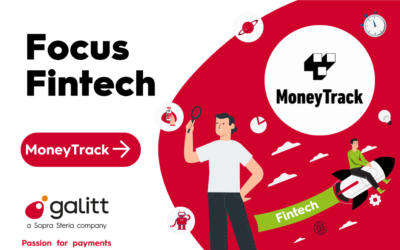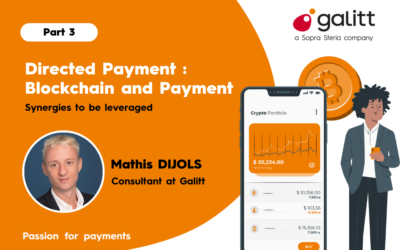Connected objects are transforming the act of payment

For the past fifteen years, connected objects have been part of our daily lives. Under the effect of these technologies and the emergence of contactless payment, whose usage statistics have exploded, means of payment are multiplying. Originally available on bank cards and some smartphones, NFC/contactless technology is now integrated into multiple media adapted to each situation.

Credits : Manipal Technlogies
The role of NFC/contactless technology in payment
The appearance of NFC (Near Field Communications) is indeed a founding principle of contactless payment. This technology is part of the same family as Bluetooth or Wi-Fi: it allows interaction between two compatible devices. One of the particularities of NFC technology is the fact that the distance between the two objects must be very small to allow the transmission of information, smaller than with Bluetooth, for example. This can be a weakness or, in the case of contactless payment, an advantage, as it allows for a more secure connection.
This contactless payment method is relatively young, as it appeared in 2007 in the UK and only in 2012 in France. The British adopted it very quickly, but it took the French a little longer to accept it in their payment habits. Nevertheless, contactless payment usage statistics are progressing at an ever increasing rate. In France, for example, the number of payments made with contactless bank cards has risen from 1.3 million in 2012 to more than 3 billion in 2019, an increase of almost 3,000%. This exponential increase has propelled contactless payments to become a real success. The fact that it has been made available on smartphones has also greatly contributed to its democratization, being integrated into a universal medium.
A simplified purchasing act
On the merchant side, cashing a contactless payment is much faster than using cash. This time saving can be significant in the long run to relieve queues and cash out for merchants. On the customer side, the ease of use of contactless payment makes it a fast payment method that does not require typing a security code, writing a check or counting change.
Finally, contactless payment is among the payment methods with the lowest fraud rate. A report from the Observatoire du Paiement fromSeptember2020 tells us that fraud related to contactless payment was 0.019% on bank cards in 2019. This rate is lower than that of withdrawals (0.028%) or even remote payments (0.17%), making contactless payment a safe way to make purchases. The low ceiling of the contactless transactions by bank cards with a maximum authorized at 50€, makes the fraud towards this means of payment not very attractive, the recoverable amounts being very low. On the other hand, one must keep a closer eye on contactless payments by smartphone, whose ceiling can reach higher amounts (300€ for Apple Pay for example).
As the need to be able to pay quickly accelerates, just as contactless has gained momentum in recent years, connected objects are also poised to undergo a shift to more mass adoption through enhanced security.
Tokenization and security
Tokenization is the technology that has made it possible to secure payments via connected objects. This system ensures that the 16-digit card number is not stored or used on a mobile device. An alternative token or number is substituted for each new medium through which purchases are made. It uses protection similar to the physical security of a smart card and applies it to digital payments.
The user enters his credit card number only once on his phone. The user is authenticated by a unique bank password sent to their phone.
Tokenization adds an extra layer of security since the credit card number is hidden, even when paying at a physical point of sale. Indeed, most users feel more confident using a digital wallet offered by their own bank, so this security process allows them to use digital payments with confidence.
A multitude of connected objects
Motivated by the resounding success of contactless payment, many payment players are thinking of ways to integrate it everywhere: from smartphones with Samsung Pay, Android Pay or Apple Pay to connected watches or fitness bracelets such as Garmin Pay or Fitbit Pay. There are even connected jewelry products such as Aeklys One, or Evering, the new connected ring supported by Visa. This ability to integrate contactless on any object makes them even more attractive to consumers.

Credits : Thales
The first public experiments to have seen the light of day were the music festivals where the organizers thought of proposing to the festival-goers to equip them with a connected bracelet allowing them to pay for purchases on the spot with the maximum of practicality.
Innovative initiatives are being implemented among banks.
Barclaycard has launched the bPay Loop, an accessory that incorporates an NFC chip designed to slip onto connected wristbands and instantly turn them into contactless payment devices.
Another example is Jaab, an original e-wallet initiative launched by La Banque Postale in 2019 that aimed to replace pocket money among tweens.
Other players are also looking to use contactless to capture their customers directly within their ecosystem.
The beach of La Baule in France and the French ski resort of La Plagne have experimented with payment solutions that work only in their respective areas, allowing visitors to pay for their purchases with a bracelet or a pass and even benefit from targeted promotions at certain merchants.
Disney is considering replacing tickets for some of their attractions with a “Magic Pass” system. Instead of buying these tickets individually, the Magic Pass will be a card that allows you to pay for access to the Studio Park, pay at the various restaurants in the park, and even serve as a key to the hotel.
The examples above are concrete and already in place in some cases, but there are also more exotic examples of connected objects. We can mention the smart nail orconnected nail, or theconnected tattoofromMIT. Even more immersive, a Polish startup recently disclosed a payment implant project.
The Internet of Payments
Major players in the financial services market are beginning to develop and refine solutions that enable device manufacturers to build secure payment functionality into the manufacture of connected devices.
The birth of the Internet of Payments has been spurred by the development of the Internet of Things and is expected to grow proportionately The Internet of Payments enables payment processing on many types of IoT devices such as automobiles, appliances and wearables. For example, Hyundaipartneredwith Xevo to launch a new feature that allows drivers to pay for gas from their vehicle’s screen.
Samsung has also released a connected refrigerator that allows users to order groceries and pay from their kitchen. This service was developed in partnership with MasterCard in the US.
The protocols that govern IoP have yet to evolve, but when coupled with the cloud, big data, artificial intelligence and biometrics, they have the potential to become the next big growth industry.
Contactless technology is spreading in many areas and the ways to use it are evolving fast. The fact that it is easily integrated via a chip makes it portable on a huge number of media. Even if the most used are of course the bank cards and the smartphone, we could see in this article that the integration of contactless will not stop there.



